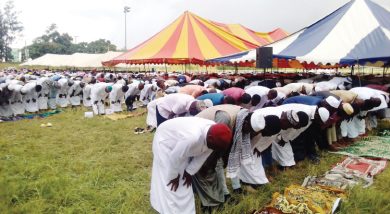Bitter side of Kaunjika

Though cheap, unique and readily available, second-hand clothes are an enemy of poor economies. EPHRAIM NYONDO writes.
Mondays are always busy at Limbe Market, Blantyre. Rows of second-hand clothes in hangers swing like flags symbolising the country’s departure from locally made wear—overshadowing heaps of unsorted clothes spread on mats.
Between the lines and piles are traders loudly marketing their imports and bargain-hunting shoppers rummaging for their pick: T-shirts, blouses, shirts, skirts, trousers, jackets, shorts and more.
Few will leave empty-handed, for Limbe is profusely stocked with second-hand garments from the West. This includes replica jerseys for overseas sports outfits and designer labels. It is called kaunjika, cheap and negotiable.
“I order three to four bales per week and we have several customers,” says Yusus Sanawi, one of the traders profiting from the cast-offs whose voyage to developing countries often begins with charities in Europe and North America.
Oxfam reports that they account for over 50 percent of the clothing in many sub-Saharan African countries, including Malawi.
But for Eliness Chipinga, these clothes are not rejects. They are classy and desirable.
“The price is manageable, the designs are great and they are fairy used anyway. After all, they actually last longer than Chinese wear,” said the resident of Bvumbwe, Thyolo, while unearthing a skirt from a pile.
This looks like a win-win deal. The Western charities get the much-needed revenue. The low-income Malawians can afford well-made clothing. Even small-scale traders are cashing in from the merchandise.
But the influx of the bales has a devastating impact on fragile economies, experts warn.
“The long-term effect is that countries such as Malawi, Mozambique or Zambia can’t really establish or protect their own clothing industries if they are importing second-hand goods,” says Andrew Brooks, a lecturer in development geography at King’s College in London.
Brooks is a co-author of the study Unravelling the Relationships between Used-Clothing Imports and the Decline of African Clothing Industries”.
He explains: “Your T-shirt may be quite cheap for someone to buy, but it would be better if that person could buy a locally manufactured T-shirt, so the money stays within the economy and that helps generate jobs.”
Among labour-intensive manufacturing sectors, the textile industry has always been a springboard to industrialisation. Having passed through an initial period of accelerated development of the textile and clothing industry, the UK is a model of this transformation from an agrarian to an industrial society.
Those who confined their early development stages to heavy industries—like Russia and China—had to reconsider their growth pattern in later years.
Therefore, history confirms that a booming clothing sector generates jobs and national revenue which can help end dependency on aid.
However, not in Malawi.
Liberalisation of trade policies in the early 1990s has seen both second-hand and cheap new imports, especially from Asian countries, displacing local products on the market.
This, according to economist Sam Mpasu, has undermined growth opportunities in the garment local industry—leading to eventual privatisation of David Whitehead and Sons, the country’s largest textile manufacturer.
Mapeto DWSM general manager Martin Mpata bemoans the stalling of government’s efforts to ban Kaunjika, saying: “Some of the imports are substandard.”
The industry is also wrestling with a new challenge: Proliferation of cheaper and less durable Chinese clothes.
“The major challenge is that we are operating in a liberalised economy. Even worse our local clothing industries have become more expensive than those made in Asia due to high cost of production,” says Mpasu.
This means that banning Kaunjika will only lead people to Chinese cheaper goods—not local firms and tailors.
As argued by Brooks, whilst used t-shirts, jeans and dresses can satisfy a basic need for affordable clothing, they ultimately help the poor get poorer and the richer become richer.





